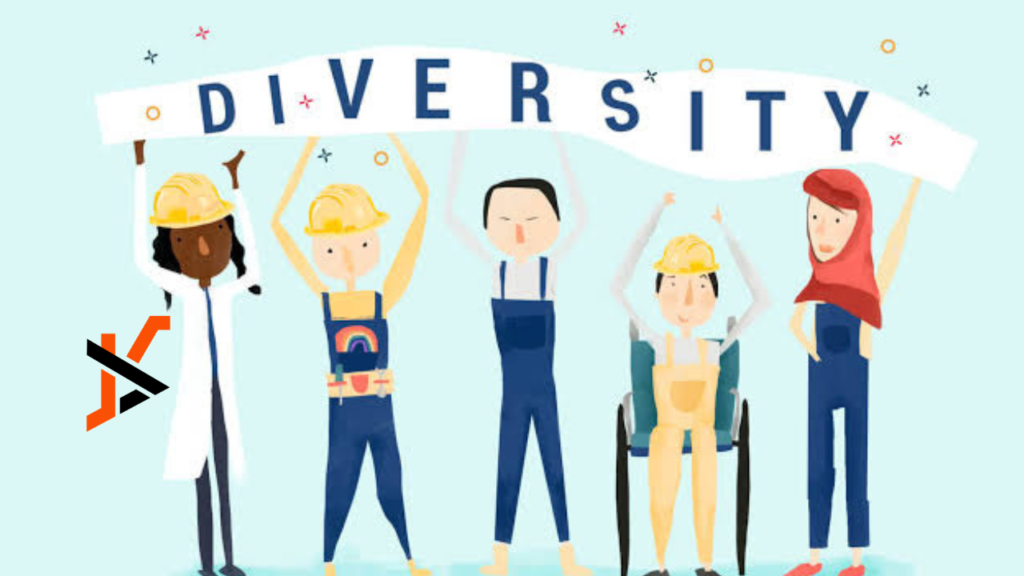Diversity enriches workplaces by bringing varied perspectives, experiences, and talents. Embracing diversity fosters innovation, creativity, and inclusivity, driving organizational success. By nurturing diverse teams, organizations cultivate a dynamic and vibrant workplace culture that celebrates uniqueness and empowers individuals to thrive professionally and personally.
Introduction to Workplace Diversity
Imagine a workplace where the convergence of varied life experiences, cultural backgrounds, and distinct abilities coexists and thrives, generating a vibrant tapestry of ideas and innovation. This is the essence of diversity in the workplace. An inclusive umbrella shelters an extensive mix of human differences and potential. Its significance spans dimensions, fuelling creativity, decision-making, and organizational adaptability. It is about tapping into the abundant tapestry of human diversity to create a workplace that is not just multi-dimensional but also dynamic and progressive.
Exploring the Multi-Dimensional Aspects of Diversity
Diversity is simple and complex; the visible, invisible, spoken, and unspoken variances make each unique. These differences encompass an array of characteristics, including, but not limited to, ethnicity, gender identity, age, religious beliefs, and cognitive styles. Through the lens of diversity, we also consider diverse backgrounds, such as educational levels, geographic locations, socio-economic statuses, and work experiences. In appreciating this intricate web of human diversity, businesses can unlock the potential within the collective pool of their employees’ individuality, leading to a synergy of innovation and productivity that drives competitive advantage in the marketplace.
Strategies for Fostering Inclusion
Inclusion is the key that turns the lock of diversity to release its full potential. It is the active effort to establish a workplace where everyone feels seen, heard, and supported. Strategic inclusion involves more than avoiding discrimination; it is about embedding equality into the foundation of an organization’s culture. This effort includes promoting diverse leadership, implementing bias training, and cultivating an environment where all voices are encouraged and valued. Managers and team leaders play a critical role in modeling inclusive behavior through encouragement, mentoring, and openness to feedback and diverse perspectives. Bolstering such an environment creates a thriving workplace and a solid platform for innovation and growth.
The Benefits of a Diverse Culture
The rewards of fostering a diverse and inclusive work environment are manifold. When diversity is genuinely embraced, it brings forth a variety of perspectives that contribute to more comprehensive problem-solving and innovation. A diversified workforce equates to a broader array of solutions to complex challenges, reflecting the diverse market in which the business operates. Studies have shown that companies with greater diversity are 35% more likely to outperform their less diverse counterparts. Moreover, a diverse work environment is intrinsically linked to increased job satisfaction and employee retention, reducing hiring and training costs and creating a positive cycle of attracting top talent from various backgrounds. In this way, diversity is not just a concept to be recognized within companies but a strategic asset to be nurtured.
Acknowledging the Challenges
While the goal of a diverse and inclusive workplace is commendable, getting there is often fraught with challenges. Unconscious biases can inadvertently influence decisions in hiring, promotions, and daily interactions. These biases and societal stereotypes can create barriers to creating a genuinely inclusive environment. Businesses must address these issues head-on through continued education, open discussions about diversity and inclusion, and a stance of zero tolerance towards discrimination. A culture of transparency and accountability can serve as a foundation upon which a company builds its diversity and inclusion initiatives.
Proactive Diversity Management
Organizations must proactively support and promote this vital organizational component to manage diversity successfully. This starts with the leadership’s commitment to diversity, implemented through clear, transparent policies that enforce diversity goals. These policies may include diverse hiring practices, employee resource groups, and equitable opportunity advancement across all company levels. To ensure these strategies are not merely performative, they must be accompanied by solid accountability practices. Metrics and benchmarks can help track progress, but the pervasive organizational attitude toward diversity will sustain these efforts.
The Significance of Diversity Training
Diversity training serves as a cornerstone for understanding and respecting the myriad differences among employees. It is essential for combating prejudices and fostering an organizational culture that celebrates rather than merely tolerates diversity. Proper training can help dismantle unconscious biases and empower employees to bridge cultural gaps, turning diversity from a potential source of tension into a powerful uniting force. When implemented thoughtfully and consistently, diversity training programs can revolutionize an organization’s dynamics, creating a harmonious, respectful, and productive workforce.
Diversity’s Global Influence
Workplace diversity takes on new dimensions in an era of globalization as companies increasingly operate internationally. Understanding, respecting, and harnessing cultural differences is paramount for global business operations. The benefits of diversity in this context are not just local but spill over into international relations, creating opportunities for business expansions and access to new markets. Global companies that champion diversity can serve as ambassadors for inclusive practices on the world stage, promoting a ripple effect that could lead to broader societal change.
Measuring the Success of Diversity Efforts
Establishing meaningful and measurable criteria is crucial to evaluating the success of diversity initiatives. These metrics include representing diverse groups within the workforce, the number of diversity-centered projects undertaken, employee satisfaction scores, and diversity in leadership roles. By tracking these key performance indicators, organizations can fine-tune their strategies, celebrate successes, and address improvement areas.
Moving Forward with Diversity
As society progresses, the concept of diversity in the workplace will continue to evolve, driven by the ongoing dialogue about what it means to be inclusive and responsive to an ever-changing global workforce. Businesses committed to diversity and inclusivity can expect not only to improve their performance but also to play a part in driving social change. The goal is clear—a workplace where every person, regardless of their background, can contribute to their full potential, creating a more dynamic, innovative, and thriving business landscape.

